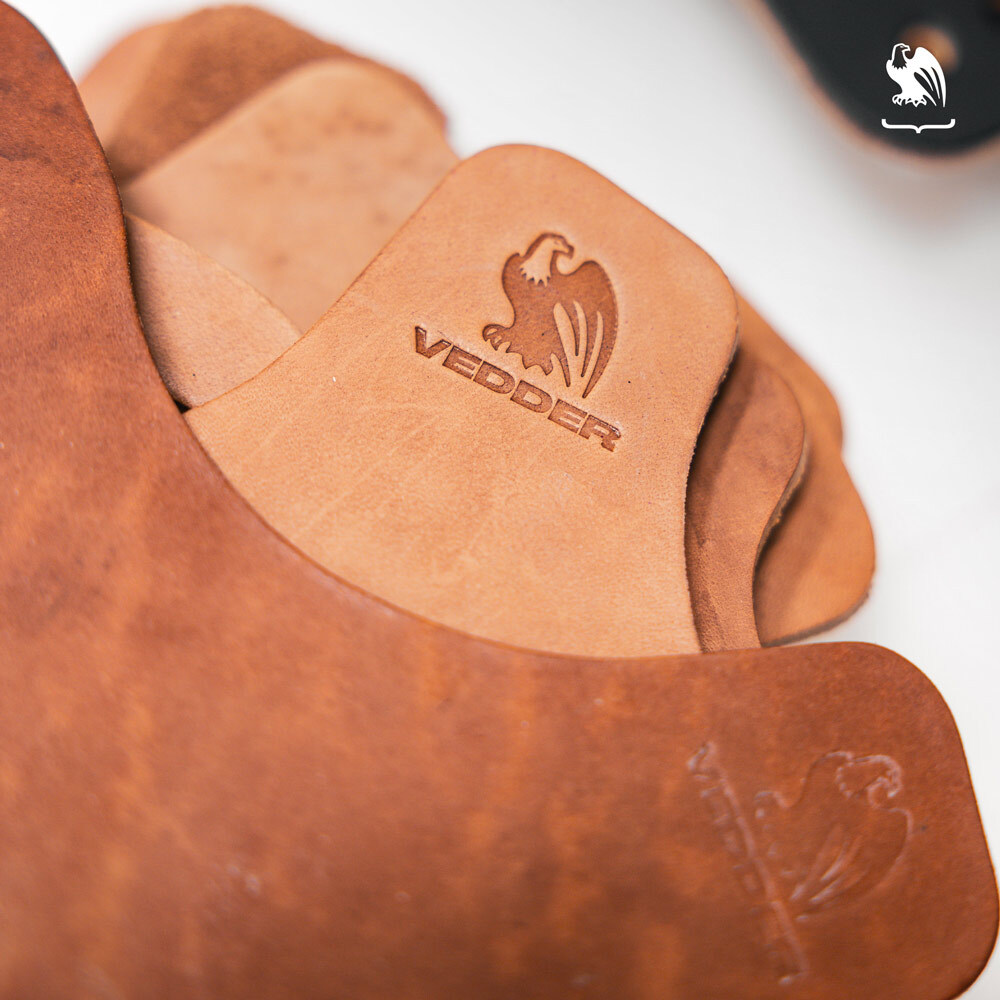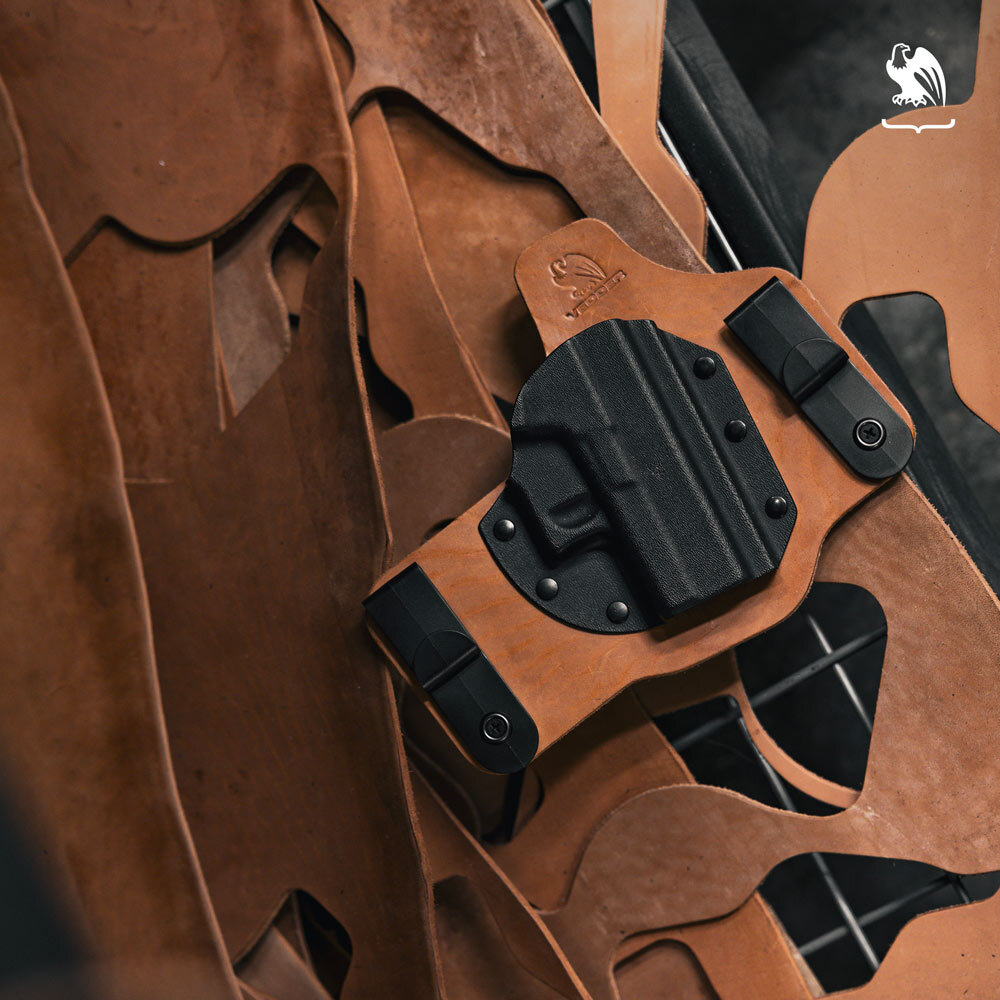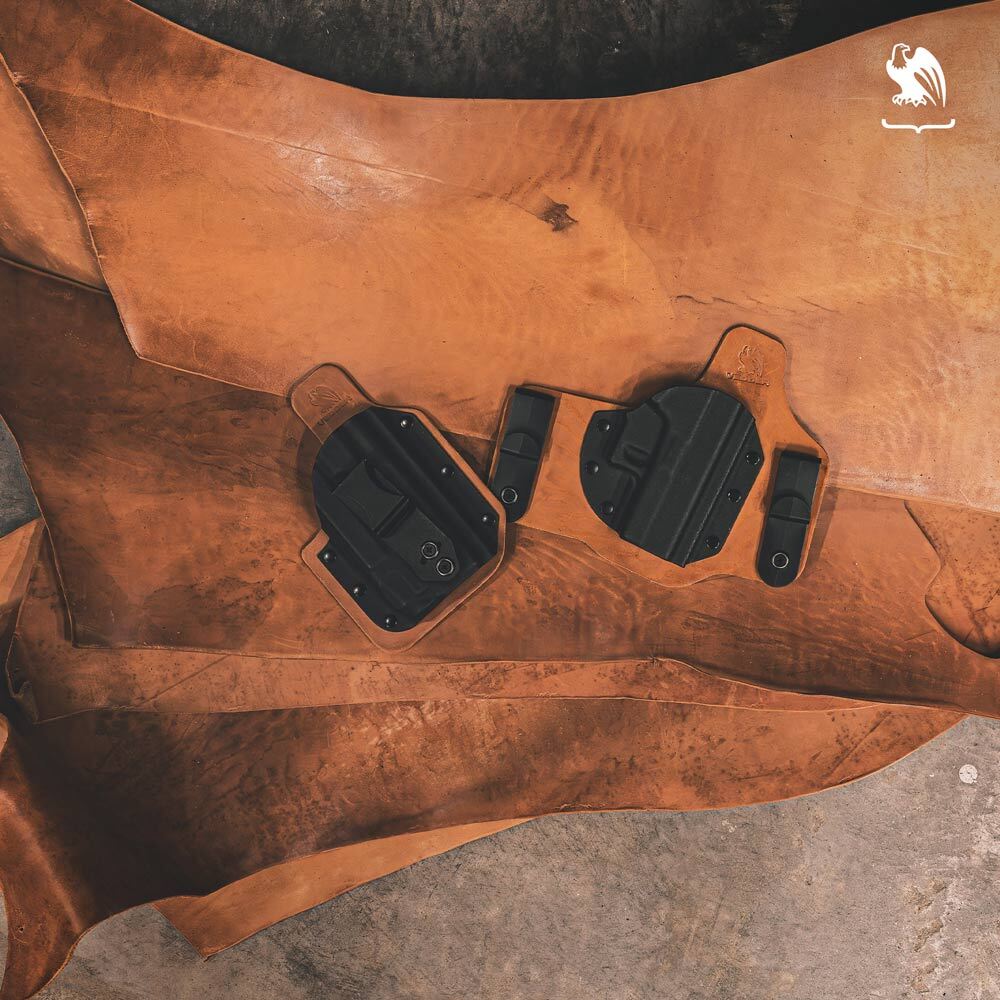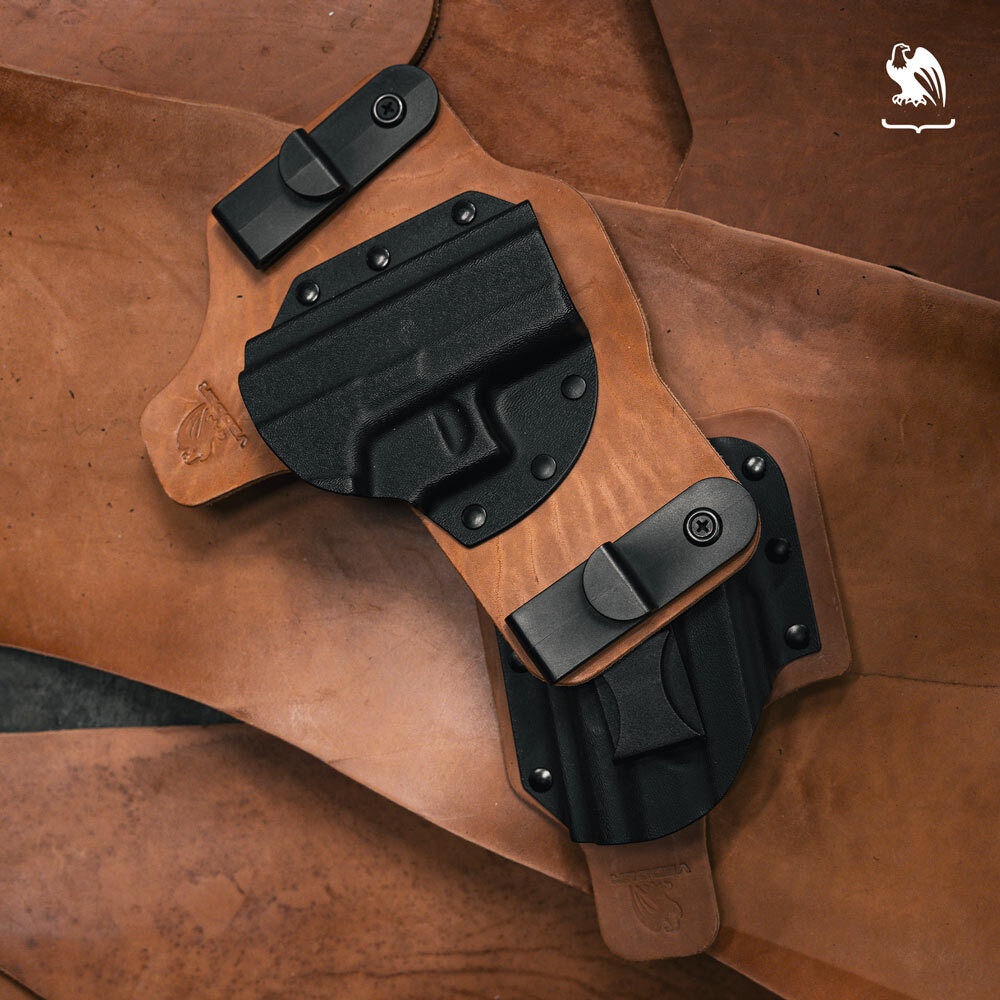What Is Horween Leather? The Legacy of America’s Gold Standard in Leathercraft

There’s just something timeless about genuine leather goods. American leather, in particular, has always been known for its tough and rugged character while maintaining a sense of luxury and class. And of all the American leathers today, none of them has a reputation quite like Horween.
The Horween Leather Company has been known for producing the finest American leather for generations. Its use of old-world techniques, premium materials, and hand craftsmanship creates a leather that has been renowned for its aesthetic and durability for over a century.
To truly appreciate the art of leathermaking, and what makes Horween stand out among the rest, it’s important to understand the company’s history, methods, and philosophy when it comes to its craft.
What is Horween Leather?
If you’ve shopped for many leather goods, you’ve likely heard of the Horween brand. But what is Horween leather, and what makes it different from other leathers?
Established in 1905, the Horween Leather Company has a rich and fascinating history. A family business passed down through five generations, the business was founded by Isidore Horween, who adamantly went to great lengths to produce the finest leather possible.
"We should take the best of everything; the best hides, the best oils, the best dyes and finishes — then we do whatever it takes to make that leather the best. The price goes on last, and if we cannot sell it for what it is worth, we should not make that leather," he is quoted as once saying.
Based in Chicago, the company has been in its current facilities since 1920 and has even retained most of the original machinery. One of the oldest continuously operating tanneries in the United States, the Horween Leather Co. is one of only a handful that still processes hides from start to finish using old-world methods.
This old-school approach is, in large part, one of the many reasons the name “Horween” is still synonymous with “quality” in the leather industry. Each piece of leather goes through a rigorous tanning process that expertly blends traditional and modern techniques. Only the best materials are used, starting with native, high-grain hides and finished with premium retanning agents, oils, and dyes.
“We always felt there was a right way and a wrong way to make fine leather. It takes us at least six months to make a cordovan shell. Our cordovan could probably be made faster, and people might not even be able to tell the difference… but I can,” Arnold Horween, Sr., the president of Horween Leather Company from 1949 to 1983, once said.
Years of experience combined with an uncompromising determination to craft the very best have earned Horween a worldwide reputation as the very best of American leathers. And it’s paid off. Horween has been used to make everything from soldiers’ boots during World War II, high-end bags, and jackets to Wilson NFL footballs, Spalding NBA basketballs, and Rawlings baseball gloves. And, of course, gun holsters.
Types of Horween Leather

Horween produces several types of leather that can be used for various purposes. Although the company supplies many types of leather, including those for footballs and baseball gloves, these are some of the most notable:
Chromexcel: Chromexcel, the original and most popular Horween leather, is tanned with a traditional tree bark recipe and treated with Horween’s custom blend of natural oils and greases. This type of leather takes a great deal of time and effort to craft, going through 89 different processes over 28 days.
Genuine Shell Cordovan: Shell Cordovan is a unique type of leather, slow-steeped in vegetable liquors and hand-shaved, a process that takes at least six months. The leather is expertly finished by hand using dyes that give it a deep color and beautiful gloss.
Essex: Using the same traditional tanning extracts as Genuine Shell Cordovan, Essex, along with Dublin and Derby leathers (which are waxed), are tanned with high amounts of oil that age beautifully.
Russet: Russet Strips, the type of leather that we use for our hybrid holsters here at Vedder Holsters, are tanned alongside the Genuine Shell Cordovan for a month before being vegetable tanned separately. This process creates a strong, dense leather that holds its shape and can withstand a great deal of use.
What Makes Horween Better than Other Leathers?
Horween has a reputation for being the best on the market, for good reason. And it all starts with the hides they source.
Most genuine Horween leather is made from premium, full-grain hides. Full-grain leather is the highest quality leather available and is superior to other leathers like top-grain and split-grain. It comes from the outermost layer of an animal’s hide, making it the strongest leather you can get.
Full-grain leather has a higher fiber structure, natural durability, and a beautiful marbled appearance. It’s also naturally moisture-resistant and tends to get better with age rather than breaking down over time.
The Horween Leather Co. treats these hides with natural oils, waxes, and dyes using traditional methods that eventually develop into a rich patina. Unlike other tanneries, Horween puts in the time to produce the best possible product, resulting in leather that lasts longer, looks better, and is superior to work with.
How is Horween Leather Made?

Horween leather undergoes a meticulous old-world tanning process before being distributed to vendors. Skilled craftsmen put in the work by hand to give this leather its high-end finish and distinct patina, where other tanneries cut corners to save time at the expense of quality.
These extensive tanning techniques can take anywhere from one to six months, depending on the leather, and some require around 90 different steps to complete. The Horween Leather Company makes several types of leather, each of which requires a specific approach, but the three basic methods, outlined in detail by The Tannery Row, are the same.
Preparation & Tanning
Unlike most tanneries today, Horween still processes hides from start to finish. When raw hides arrive at the facility, the very first step is a visual inspection of each one to ensure its quality.
The hides are then treated with a lime solution to remove any hair before being placed into large wooden drums for chrome tanning. At this stage, the hides are considered “wet blue.”
The next step is vegetable tanning. Hides are submerged in traditional 8-foot tanning pits filled with house-made vegetable tanning liqueur — a mixture of extracts Horween has been using since its origin.
From there, each piece is hand-sorted to determine the type of leather it is best suited for. Hides are then cut to size and sent to be retanned. During the retanning phase, the hides are exposed to a mixture of different dyes depending on the type of leather being made, giving each kind a different color and aesthetic.
Next, hides go through a process known as “hot stuffing,” where they are treated with natural oils and waxes. This conditioning treatment ensures durability, longevity, and water resistance, preventing the leather from breaking down over time.
Drying
Now that the leather has been treated, it must go through a drying process that differs depending on the type of leather. The most natural way to do this is by air drying, which allows the hide to set without stretching the fibers.
Some other methods of drying include pasting, in which the leather is pasted to a frame and exposed to a heater, and toggling, an older technique that requires clipping and stretching the hide to air dry for a more distinct grain. Vacuum drying, which is a more modern approach, may also be used to draw the moisture from the leather for a nice, smooth finish.
Finishing
The final phase of the leathercrafting process is the finishing process. This begins with the dried leather being split to the correct weight before being hand-finished. This involves feeding the leather through a machine to be treated with another layer of dye before it is hand swabbed to build color.
The leather is then air-dried once again, sprayed with a clear coat, and sent to be either embossed or buffed and stamped with the Horween name and measurement before being distributed.
What is Leather Patina?
One of the features that makes Horween leather so desirable is the distinct look it develops over time. High-quality leathers like Horween eventually attain a rich finish, or “patina”, that adds character and beauty to the product.
This patina is the result of months or years of the leather being exposed to oils from your skin, heat, moisture, and wear. It’s a natural part of the leather’s “wearing in” process, and the result is a deeper color, subtle shine, and more pliable texture.
Alongside the imperfections already present from the animal’s hide, scratches, dents, and smudges that occur in day-to-day use are also absorbed by the leather and become part of the patina to create a pattern that is truly one of a kind and ever-changing.
It’s important to understand that not all leather patinas. This transformation is unique to high-quality full-grain and sometimes top-grain leather. The tanning methods used can also have an impact, with vegetable-tanned leather usually exhibiting a patina while chrome-tanned leather often does not. Most Horween leather is full-grain and vegetable-tanned, which results in a beautiful patina that only gets better with age.
Does Horween Leather Scratch Easily?

Because Horween leather is kept very natural and is treated with a number of deeply conditioning oils and waxes, it is normal for it to become scratched or marked in a short span of time.
Although it can be concerning or frustrating to see a ding on your brand-new leather, this wear is to be expected and is a very normal part of the Horween patina process. Once the patina is fully developed, indents and divots can be easily buffed into the leather to create a one-of-a-kind piece with a physical memory of its history.
How Long Does Horween Leather Last?
Horween has had over a century to perfect the craft of leatherwork, and its products have had just as long to withstand the test of time.
According to the company, its mission since 1905 has been to make the finest leather possible by sourcing quality materials, using tried and true techniques, and putting in the time to get it right using sustainable methods.
“Drawing on more than 115 years of experience, we strive to provide our customers and the end users with a product that can be used with confidence for many years,” the company states.
These processes ensure that Horween leather is not only durable and element-resistant, but it also means that once you invest in one of these items, it will likely be the last one you ever have to buy. Not only will it last, but its patina process will likely just get better with age.
How to Care for Horween Leather
Since Horween leather is made from full-grain hides, it’s naturally durable, flexible, and moisture-resistant with a long life expectancy. That said, there are some steps you can take to care for your leather that will keep it in great condition for years to come.
The most important thing you can do to reduce wear on your leather is to minimize its exposure to the elements. Direct sunlight and high temperatures can cause it to become dry and crack over time, as can prolonged contact with moisture.
Keeping your leather clean and dry by regularly wiping it down with a soft, dry cloth will keep it looking its best. Avoid using soap, water, or other cleaning products on your leather. Instead, opt for a quality leather conditioner and use it regularly, especially if you need to buff out any marks or scratches.
Why Vedder Holsters Are Crafted With Horween Leather

Since opening our doors in 2012, we’ve carefully sourced materials from companies that share our dedication to quality American craftsmanship. Few businesses reflect our values like the Horween Leather Company.
Like Vedder Holsters, Horween Leather Co. is a family-owned American business that prides itself on handcrafting long-lasting products. Never cutting corners, we’d rather put in the extra time and effort to create a piece that our customers are proud to own.
Because our values are at the heart of everything we do, it has always been important for us to work with suppliers that share our vision. Horween leather is the finest in the business, and it only made sense to choose it as our source of natural horsehide leather.
Our hybrid holsters, made with a secure Kydex shell and a flexible leather backing, are specifically designed to be comfortable during daily concealed carry. Our horsehide leather backings are made of full-grain, vegetable-tanned Horween Russet leather, which comfortably molds to your body and has a rugged, marbled appearance.
Simply put, we use Horween leather because it’s the best. Our goal has always been to provide holsters built for longevity and comfort, and using Horween means we can offer a product designed to last a lifetime.
Summary
For over a century, Horween leather has established a reputation for producing some of the finest leather in the nation. Its dedication to quality, American industry, and hand craftsmanship sets it apart and places it among the most sought-after leathers for products built to last — like the hybrid holsters we make at Vedder Holsters.
Looking for a reliable, custom-fit holster? Visit our Holsters by Gun Model page to find Kydex holsters tailored to your firearm. Not sure which holster is right for you? Take a look at our interactive comparison tool to view holsters side-by-side and filter by feature. Plus, explore our Resources Page for gear recommendations, concealed carry guides, and exclusive content to elevate your carry system.
*This page contains affiliate links. When you purchase a product included on this list, we receive a commission at no extra cost to you.
